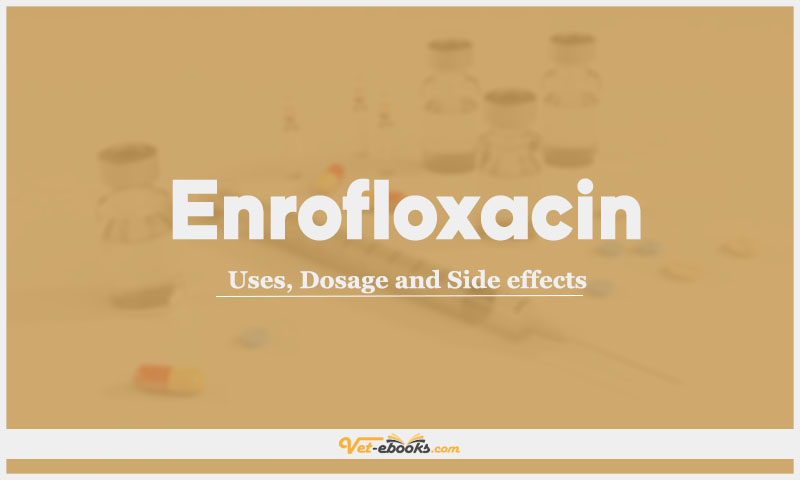Enrofloxacin: Uses, Dosage and Side Effects

Overview
- Enrofloxacin is a concentration-dependent antibiotic that prevents bacterial DNA gyrase activity.
- Pulse dosing strategies may be helpful against Gram-negative bacteria in particular.
Uses of Enrofloxacin
- Fluoroquinolones should be reserved for infections where culture and sensitivity testing indicate a clinical response and lower-tier antimicrobials fail.
- Active against Mycoplasma, Pasteurella, Staphylococcus, Pseudomonas aeruginosa, Klebsiella, Escherichia coli, Mycobacterium, Proteus, and Salmonella.
- Poor against obligatory anaerobes.
- Fluoroquinolones treat soft tissue, urogenital (including prostate), and cutaneous infections because they are lipophilic and reach high cell concentrations.
- Enrofloxacin, clarithromycin, and rifampin treat non-tubercular mycobacterial disease.
- In severe sepsis, i.v. the administration is allowed.
- Dilute to 10 times the volume with 0.9% sodium chloride and deliver slowly (35–45 minutes) because the carrier contains potassium.
Dose of Enrofloxacin in Dogs and Cats
Dogs:
- 5 mg/kg s.c. q24h. Higher doses (10 mg/kg q24h) should be considered for certain sites, including prostatitis.
- Even higher doses may be necessary for certain isolates of Pseudomonas aeruginosa.
- Contact the manufacturer to discuss individual cases.
Cats:
- 5 mg/kg s.c. q24h; 2.5 mg/kg p.o. q12h or 5 mg/kg p.o. q24h
Drug Dosage Calculator
You Should Give:
Side Effects of Enrofloxacin in Dogs and Cats
- There have been cases of irreversible retinal blindness in cats at dosing rates higher than those currently recommended, although at least one case was dosed at the 5 mg/kg q24h rate.
- Enrofloxacin should be used with caution in epileptic animals until further information is available, as concurrent administration of NSAIDs and enrofloxacin increases CNS adverse effects in humans.
- Accurate body weight and use of a 1 ml syringe facilitate careful administration in cats, and doses greater than 5 mg/kg/day are not recommended but have been used in cases of severe sepsis.
- If this route is chosen, the drug should be diluted 10 times with 0.9% sodium chloride and administered slowly, as the vehicle contains potassium (ideally over 35–45 minutes).
Contraindications of Enrofloxacin in Dogs and Cats
- Fluoroquinolones are relatively contraindicated in growing dogs, as cartilage abnormalities have been reported in young dogs (but not cats).
- Enrofloxacin is not authorized in cats <8 weeks of age; dogs <1 year of age; large-breed dogs <18 months of age.
Some Notes:
- Cation-containing absorbents and antacids can bind fluoroquinolones and inhibit their absorption.
- Sucralfate and zinc salts may also impede absorption.
- Separate dose by at least 2 hours.
- Plasma theophylline concentrations rise with fluoroquinolones.
- Fluoroquinolone clearance may be reduced by cimetidine, thus use with caution.
- Some fluoroquinolones may decrease the metabolism and increase the nephrotoxicity of ciclosporin and tacrolimus in humans, so concurrent use in animals should be avoided until more research is done.
Tip
Do You Want To Increase Your Veterinary Knowledge and Practical Skills?
You Can Now Browse and Download +3000 Books For Veterinary Professionals & Students Online.
Download Veterinary Books




















